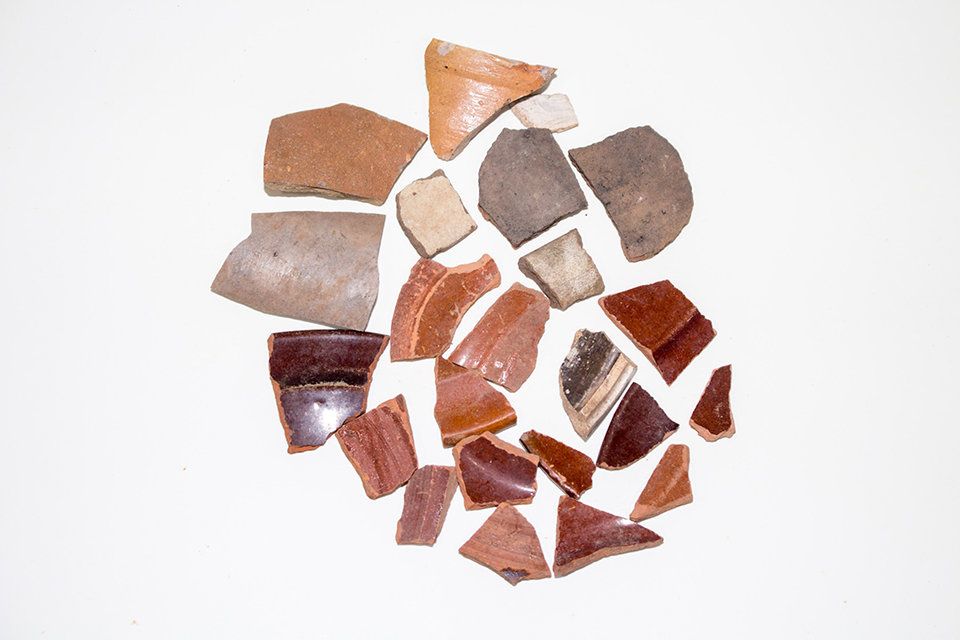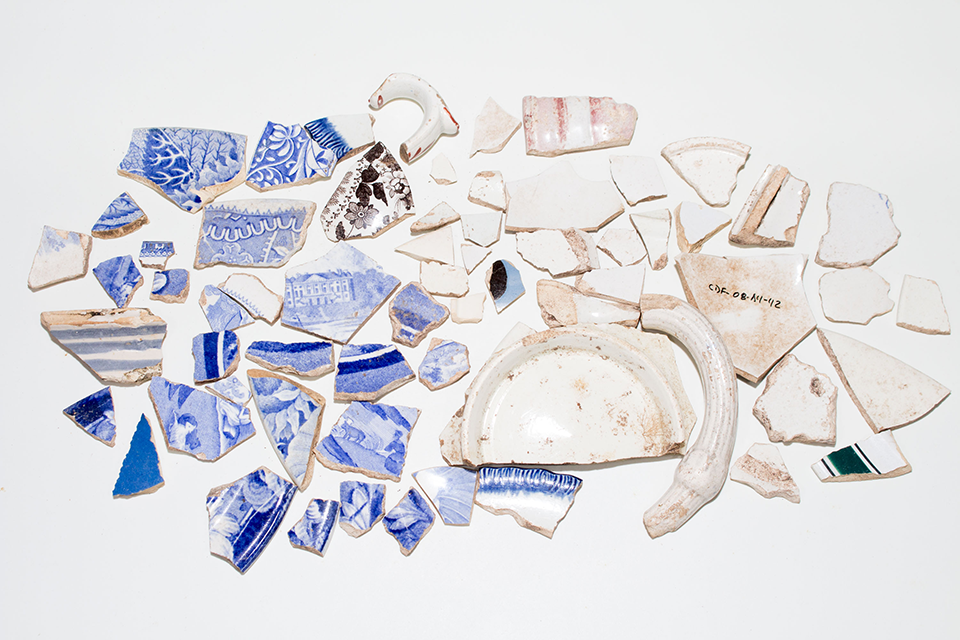Pieces of chinaware, glass bottles, pottery jugs... Those and other artifacts make up the Colección Maruri, an archaeological collection currently housed at the Library & Archive of the Charles Darwin Research Station. They are the evidence of human occupation in Galapagos since at least the 18th century. Although there may be older pieces. Or so they said.
When the Spaniards first arrived to the coasts of the Inka Empire, they got into contact with a wealth of native oral traditions. One of those tales was a story about the king Tupaq Yupanki Inka. While conquering the coasts of nowadays Ecuador, the Andean sovereign had news about a group of merchants arrived from some islands to the West. He then ordered the building of rafts for his 20,000 warriors and set sails to the western horizon.

According to the story, Tupaq Yupanki returned after a year, and went back to Cusco, the Inka capital, with booty got into two islands the expedition visited, Auachumbi and Ninachumbi. The tale was put into writing by chroniclers like Sarmiento de Gamboa, Miguel Cabello Valboa or Martín de Murúa.
Unconnected with those events, in 1535 the ship of Tomás de Berlanga, the bishop of Panama en route to Peru, was trapped by a calm sea and moved southwest by the currents, to some unknown islands. And hence, the Galapagos were officially discovered.
But... were they?
There have been many theories about cultural exchanges between South America and Polynesia during pre-Hispanic times. Discussions centered on how such exchanges may have happened, considering the long distances, until a Norwegian adventurer, Thor Heyerdahl, proved that it was possible by sailing from Peru to Tuamotu in the raft Kon Tiki. From that moment, many eyes focused on eastern Pacific Islands like Galapagos, for they could have served as "bridges" for those travels and hold material evidence of human occupation. Berlanga could have not been the discoverer of the Encantadas after all.
Looking for such evidence, a Norwegian expedition led by Heyerdahl himself worked in the archipelago in 1952-3, carrying on the first archaeological activities in the islands. A site was discovered on the coast of Santiago Island, and a number of artifacts were retrieved, which were taken to Norway and are preserved nowadays in the Kon Tiki Museum. Although the expedition's methods were debatable, an academic paper was published stating that some of the collected items belonged to South American pre-Spanish societies.
Inspired by Heyerdahl's article, in 1963 a group of students from the ESPOL in Guayaquil (Ecuador) were led by two of their professors into a geological and archaeological trip to Santiago Island. Engineer Raúl Maruri was in charge of the archaeological survey. They collected a few artifacts, which they took to Guayaquil for further study.

During the period 70s-90s there were countless oral reports of artifacts found in the islands, but nothing was done regarding the protection of Galapagos' historic and cultural heritage. Then, in 2005, Australian researcher Simon Haberle started a project to look for archaeological and palaeoecological evidence of pre-Hispanic occupation in Galapagos. He and his team reviewed the entire available literature, asked Mr. Maruri for a report about his visit to Santiago Island, and worked with the remains housed at the Kon Tiki Museum. They finally travelled to Galapagos to carry serious archaeological surveys and to perform analysis on the collected material.
It seems that the outcomes were not as expected. In a preliminary report to Galapagos authorities, Haberle suggested that Heyerdahl's results were inconclusive, adding that the pre-Hispanic human occupation of the islands was most unlikely.
An indirect consequence of Haberle's project was the donation, by Raúl Maruri, of his collection of Galapagos' artifacts to the CDF in 2005. After spending several years outside CDF's facilities, the collection has recently returned to the CDRS, where it has been housed by the Library & Archive in a space especially devoted to it.
Maruri's collection could be considered the seed for the re-creation of the CDF museum, which was a core part of the CDRS during its early years. And it can be a necessary "click" to foster and support archaeological and historical research in Galapagos. For, no matter its antiquity, every single fragment of Galapagos' past should be protected, researched and shared with the community and the world.




